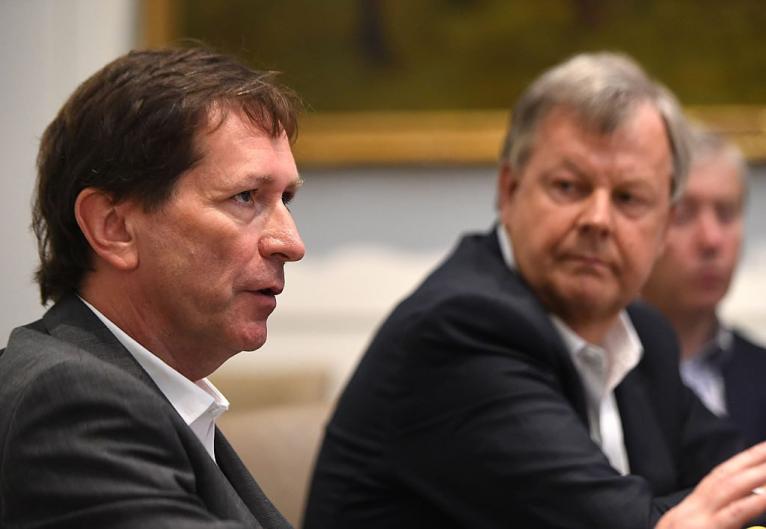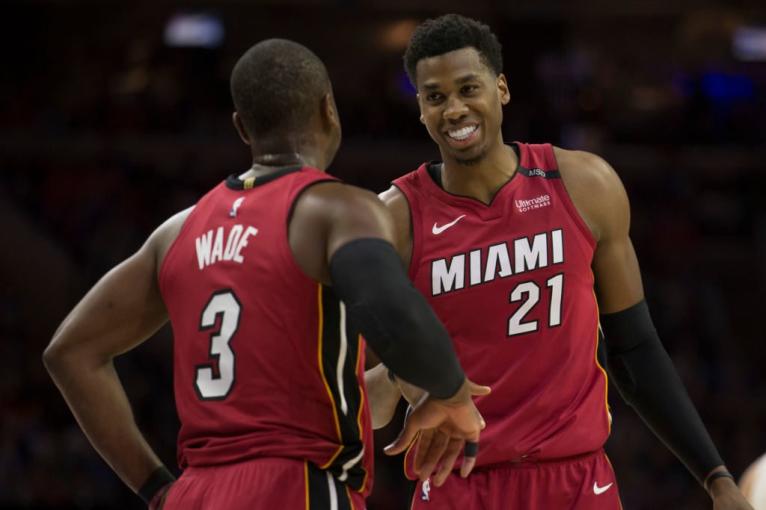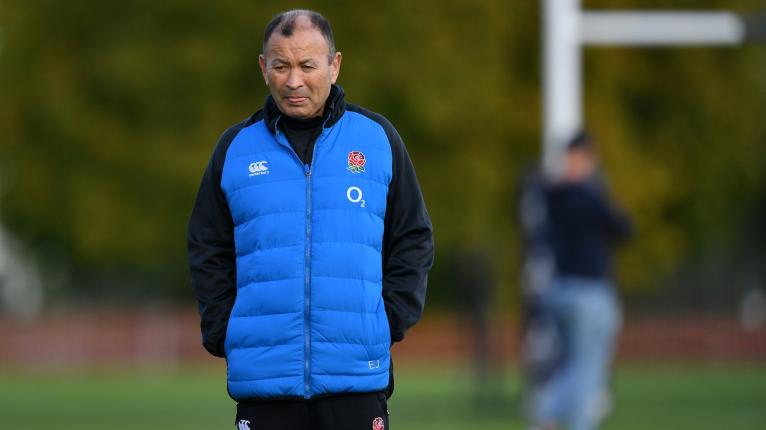The solution to Premiership's relegation debate or just pie in the sky?

Buried beneath the headline-grabbing takeover bid from CVC Capital Partners and the audacious proposals to further reduce Europe’s premiere club competition and introduce a Ryder Cup-style showdown with the southern hemisphere, there was an interesting idea for English rugby’s second tier floated at Premier Rugby Ltd’s owners meeting earlier in September.
Currently, the Greene King IPA Championship, which is administered by the RFU, is the second tier of rugby in England, with the winner, assuming they meet the Gallagher Premiership’s requisite standards for entry, promoted to the flagship competition.
It is something which has sparked debate for years.
A number of Premiership owners are keen to end relegation from the top tier, thus protecting the investments they have made in their clubs and the competition, as well as increasing the value of their clubs for prospective investors. The counter-argument has always been that if you do that, you deny the opportunity of another Exeter Chiefs-like story, of a club rising through the league structure and cementing themselves as one of the preeminent forces of English rugby.
If you were to take away the prospect of promotion to the Premiership for teams in the Championship and below, you effectively kill their ambition and implement an unshatterable ceiling above them. Given the relatively small funding that teams in the lower tiers receive from the RFU, the Championship is not the promised land that the Premiership is for teams eager to make it to the top.
Points on either side of the debate are valid and in the PRL owners meeting, the potential of the Premiership Shield, formerly the A League, to be the official second tier to the Premiership was reportedly raised as a topic.

Per The Guardian, this proposal suggested a 14-team Shield competition, which would be contested by the 12 reserve or ‘A’ sides of the current Premiership clubs, plus the 13th member of PRL and the next best finishing side in the Championship. To use this season as an example, that would mean the 12 reserve sides, London Irish and Ealing Trailfinders, who finished second in the Championship last season.
The idea would be that if any of the 12 reserve sides were to finish top of the Shield competition, then no side would be relegated from the Premiership, but if Irish or Ealing were to top the competition, they would earn Premiership status for the next season.
At the other end of the competition, the team at the bottom of the table would face a playoff with the winner of the Championship, opening the door for the likes of Yorkshire Carnegie, Bedford Blues, Cornish Pirates, Coventry or any other ambitious side to earn the way up into the Shield and to have a shot at promotion to the Premiership.
It may not be an ideal situation, but it does seem to tick boxes on both sides of the debate.
With relegation prevented if any of the reserve sides were to win the Shield, Premiership owners’ investments in their clubs are made safer. They would no longer face the prospect of automatic relegation should they finish bottom of the table.
Yet, ambition is kept burning in clubs like Ealing, Yorkshire and all other Championship and National League clubs who boast staunch support or beneficial financial situations, with promotion still being achievable, although, admittedly, even harder than at present.
It is a proposal which is unlikely to sit well with many of those clubs in the second and third tiers of English rugby, but it is a significantly better option than permanently ringfencing the Premiership. With potential involvement in the Shield with the Premiership’s reserve sides, there is also the prospect of increased funding and a slice of the much more lucrative TV deal that PRL has with BT Sport.
It is a TV deal which could be significantly larger in the next round of negotiations, too, if a second-tier competition was also included and broadcast. It could well be that the Premiership owners have taken note of the lofty figures being generated in the Top 14’s latest deal with Canal+, which also includes rights to the Pro D2 competition. The creation of a second tier owned and operated by PRL would give the Premiership owners the leverage to negotiate a multi-competition deal with BT Sport, or any other interested party, when their current deal expires in 2021.
There are obviously loopholes to this arrangement which could be exploited by Premiership sides and both competitions would need to be strictly regulated.
For example, if Worcester Warriors were sitting at 12th in the Premiership with a couple of rounds of fixtures to go and their ‘A’ side, Worcester Cavaliers, were set to play Irish in the Shield, who may be top of the competition and about to win promotion back to the top tier, Worcester could drop a number of their stars down to the Shield in an attempt to derail Irish’s promotion bid and help an ‘A’ side win the competition, thus saving Worcester from relegation.
There would have to be separate registered squads for both competitions, with a limited number of movements between the two per week, unless there was a legitimate reason to warrant the movement, such as a senior player recovering from an injury and looking to build match fitness. Promotions from the ‘A’ sides to the seniors could be unrestricted, but there would need to be strict control of player movement in the opposite direction.
As a system, it would not be too dissimilar to the relationship NBA franchises have with the G League. Every NBA franchise has an affiliate in the G League, with whom they can loan players to gain experience and prepare them for the NBA. Players in the G League can receive ‘call-ups’ from their NBA franchise, NBA players can be sent on ‘assignment’ to the G League and certain players are on two-way contracts, which see them spend the majority of their time in the G League, but still be available, on an unrestricted basis, for the NBA team for a maximum of 45 days. Miami Heat’s Hassan Whiteside is an example of a player who took this route before establishing himself as one of the league’s best players on the inside.

Any system between the Premiership clubs and their respective Shield sides would be less complicated, with the players all centrally contracted by the same club, but it’s an example of the control over player movement between the two sides that the Premiership, like the NBA, would need to have.
Another area where you would need intensive regulation would be in the make-up of these Shield sides.
With the ‘A’ sides facing the prospect of relegation from the Shield, there could be a desire from some directors of rugby to fill their Shield sides with experienced journeymen in order to avoid that drop. This would be damaging for club’s looking to develop their own homegrown talent in the competition and a percentage of each matchday 23 would need to be under a certain age, in order to keep the competition’s purpose as a developmental tool alive. These are arbitrary figures but an average of 18 players in the 23 under the age of 22 for the season would allow for younger players to come through and push for a place in the senior side, as well as allowing for a small number of senior players looking to build up match fitness, to get game time.
There would certainly be an added competitiveness to the games and with the inclusion of two senior sides in the competition, young players would be tested more arduously by this Shield than they are by the existing tournament. This is frequently a bone of contention among coaches and directors of rugby and it is one of the reasons they often choose to send players off on loan or on dual-registration with Championship and National 1 sides, instead of keeping them at their own club throughout a season.
This, of course, means that clubs will need to maintain larger squads, especially given the spate of postponed games the competition saw last season. The first few weeks of the 2018/19 season have been better, although Wasps have called off their game with Northampton Saints this week and Harlequins have been reliant on borrowing front-rowers from London Irish in order to keep their fixtures on. The Guardian reported, in reference to the meeting last week, that part of the proposal would see clubs targeting squads of around 60 players, which flies in the face of the wishes of several current directors of rugby, who would prefer trimmed squads and less games in a season.
Another major stumbling block would be that it would require the RFU to play ball. After all, if an ‘A’ side were to get relegated from the Shield, they would end up in the Championship and in the non-PRL-administered English league structure. If anything, this would require a closer bond between PRL and the RFU, something which, after looking rosy in 2016, seems to have wilted since, thanks to the number of injuries suffered in England training camps from non-rugby activities and the verbal jousting between Eddie Jones and PRL owners.

It is certainly a proposal worth digging deeper into, though.
If a middle ground can be found, it potentially absolves some of the pressure on the RFU to better fund the Championship and lower tiers, whilst giving PRL more control at the top and financial security over the investments of the clubs’ owners.
With the next heads of agreement between club and country likely to gouge the RFU even deeper given the toll taken on players at international level in recent seasons, this could be a way for the RFU to give ground without increasing their financial outlay, something which could prove testing in the current climate, given the RFU’s recent financial difficulties.
Working this closely could cause more friction between the two entities, but it could also help align the goals of the two organisations. PRL are not going away as the guardians of the top tier of club rugby in England and with the RFU lacking the financial power to make a takeover bid, as the private equity firm CVC did, they need to find a way of working harmoniously with the clubs.
The two organisations operate in symbiosis and there is a meeting point where they can both be successful and prosper from the other’s achievements. This could be a step towards that goal.
You may also like: The Rugby Pod look into the pack options that Eddie Jones has













































































